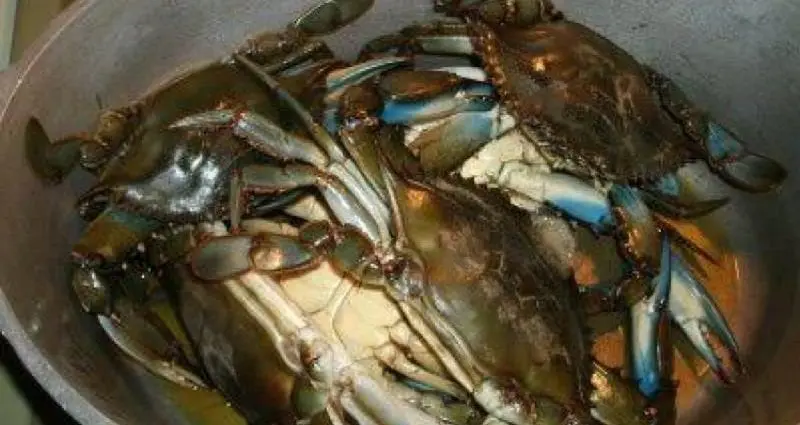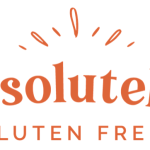Nutritional value and chemical composition.
The table shows the content of nutrients (calories, proteins, fats, carbohydrates, vitamins and minerals) per 100 grams edible part.
| Nutrient | Quantity | Norm** | % of the norm in 100 g | % of the norm in 100 kcal | 100% normal |
| Calorie value | 155 kCal | 1684 kCal | 9.2% | 5.9% | 1086 g |
| Proteins | 20.21 g | 76 g | 26.6% | 17.2% | 376 g |
| Fats | 7.52 g | 56 g | 13.4% | 8.6% | 745 g |
| Carbohydrates | 0.48 g | 219 g | 0.2% | 0.1% | 45625 g |
| Water | 71 g | 2273 g | 3.1% | 2% | 3201 g |
| Ash | 2.1 g | ~ | |||
| Vitamins | |||||
| Vitamin A, RE | 57 μg | 900 μg | 6.3% | 4.1% | 1579 g |
| Retinol | 0.053 mg | ~ | |||
| Vitamin B1, thiamine | 0.09 mg | 1.5 mg | 6% | 3.9% | 1667 g |
| Vitamin B2, riboflavin | 0.08 mg | 1.8 mg | 4.4% | 2.8% | 2250 g |
| Vitamin B5, pantothenic | 0.5 mg | 5 mg | 10% | 6.5% | 1000 g |
| Vitamin B6, pyridoxine | 0.17 mg | 2 mg | 8.5% | 5.5% | 1176 g |
| Vitamin B9, folate | 61 μg | 400 μg | 15.3% | 9.9% | 656 g |
| Vitamin B12, cobalamin | 5.94 μg | 3 μg | 198% | 127.7% | 51 g |
| Vitamin C, ascorbic | 2.8 mg | 90 mg | 3.1% | 2% | 3214 g |
| Vitamin PP, NE | 2.9 mg | 20 mg | 14.5% | 9.4% | 690 g |
| Macronutrients | |||||
| Potassium, K | 324 mg | 2500 mg | 13% | 8.4% | 772 g |
| Calcium, Ca | 105 mg | 1000 mg | 10.5% | 6.8% | 952 g |
| Magnesium, Mg | 33 mg | 400 mg | 8.3% | 5.4% | 1212 g |
| Sodium, Na | 330 mg | 1300 mg | 25.4% | 16.4% | 394 g |
| Sulfur, S | 202.1 mg | 1000 mg | 20.2% | 13% | 495 g |
| Phosphorus, P | 213 mg | 800 mg | 26.6% | 17.2% | 376 g |
| Trace Elements | |||||
| Iron, Fe | 1.08 mg | 18 mg | 6% | 3.9% | 1667 g |
| Manganese, Mn | 0.19 mg | 2 mg | 9.5% | 6.1% | 1053 g |
| Copper, Cu | 610 μg | 1000 μg | 61% | 39.4% | 164 g |
| Selenium, Se | 40.7 μg | 55 μg | 74% | 47.7% | 135 g |
| Zinc, Zn | 4.09 mg | 12 mg | 34.1% | 22% | 293 g |
| Essential Amino Acids | |||||
| Arginine * | 1.73 g | ~ | |||
| valine | 0.98 g | ~ | |||
| Histidine * | 0.414 g | ~ | |||
| Isoleucine | 0.996 g | ~ | |||
| leucine | 1.617 g | ~ | |||
| lysine | 1.733 g | ~ | |||
| methionine | 0.569 g | ~ | |||
| threonine | 0.828 g | ~ | |||
| tryptophan | 0.281 g | ~ | |||
| phenylalanine | 0.87 g | ~ | |||
| Replaceable amino acids | |||||
| alanine | 1.145 g | ~ | |||
| Aspartic acid | 2.083 g | ~ | |||
| glycine | 1.18 g | ~ | |||
| Glutamic acid | 3.396 g | ~ | |||
| Proline | 0.676 g | ~ | |||
| serine | 0.841 g | ~ | |||
| tyrosine | 0.682 g | ~ | |||
| Cysteine | 0.239 g | ~ | |||
| Sterols | |||||
| Cholesterol | 150 mg | max 300 mg | |||
| Saturated fatty acids | |||||
| Saturated fatty acids | 1.483 g | max 18.7 г | |||
| 14: 0 Myristic | 0.032 g | ~ | |||
| 16: 0 Palmitic | 0.956 g | ~ | |||
| 18: 0 Stearin | 0.491 g | ~ | |||
| Monounsaturated fatty acids | 2.815 g | min 16.8 г | 16.8% | 10.8% | |
| 16: 1 Palmitoleic | 0.121 g | ~ | |||
| 18: 1 Olein (omega-9) | 2.655 g | ~ | |||
| 20: 1 Gadoleic (omega-9) | 0.035 g | ~ | |||
| Polyunsaturated fatty acids | 2.273 g | from 11.2 to 20.6 | 20.3% | 13.1% | |
| 18: 2 Linoleic | 1.578 g | ~ | |||
| 18: 3 Linolenic | 0.087 g | ~ | |||
| 18: 4 Styoride Omega-3 | 0.018 g | ~ | |||
| 20: 4 Arachidonic | 0.088 g | ~ | |||
| 20: 5 Eicosapentaenoic (EPA), Omega-3 | 0.227 g | ~ | |||
| Omega-3 fatty acids | 0.598 g | from 0.9 to 3.7 | 66.4% | 42.8% | |
| 22: 5 Docosapentaenoic (DPC), Omega-3 | 0.05 g | ~ | |||
| 22: 6 Docosahexaenoic (DHA), Omega-3 | 0.216 g | ~ | |||
| Omega-6 fatty acids | 1.666 g | from 4.7 to 16.8 | 35.4% | 22.8% |
The energy value is 155 kcal.
- cake = 60 g (93 kCal)
Blue crab, crab cakes rich in vitamins and minerals such as: vitamin B9 – 15,3%, vitamin B12 – 198%, vitamin PP – 14,5%, potassium – 13%, phosphorus – 26,6%, copper – 61%, selenium – 74%, zinc – 34,1%
- Vitamin B6 as a coenzyme, they participate in the metabolism of nucleic acids and amino acids. Folate deficiency leads to impaired synthesis of nucleic acids and protein, which results in inhibition of cell growth and division, especially in rapidly proliferating tissues: bone marrow, intestinal epithelium, etc. Insufficient consumption of folate during pregnancy is one of the causes of prematurity, malnutrition, congenital malformations and developmental disorders of the child. A strong association has been shown between folate and homocysteine levels and the risk of cardiovascular disease.
- Vitamin B12 plays an important role in the metabolism and conversion of amino acids. Folate and vitamin B12 are interrelated vitamins and are involved in blood formation. Lack of vitamin B12 leads to the development of partial or secondary folate deficiency, as well as anemia, leukopenia, thrombocytopenia.
- Vitamin PP participates in redox reactions of energy metabolism. Insufficient vitamin intake is accompanied by disruption of the normal state of the skin, gastrointestinal tract and nervous system.
- potassium is the main intracellular ion that takes part in the regulation of water, acid and electrolyte balance, participates in the processes of nerve impulses, pressure regulation.
- Phosphorus takes part in many physiological processes, including energy metabolism, regulates acid-base balance, is a part of phospholipids, nucleotides and nucleic acids, is necessary for the mineralization of bones and teeth. Deficiency leads to anorexia, anemia, rickets.
- Copper is a part of enzymes with redox activity and involved in iron metabolism, stimulates the absorption of proteins and carbohydrates. Participates in the processes of providing the tissues of the human body with oxygen. The deficiency is manifested by disorders in the formation of the cardiovascular system and skeleton, the development of connective tissue dysplasia.
- Selenium – an essential element of the antioxidant defense system of the human body, has an immunomodulatory effect, participates in the regulation of the action of thyroid hormones. Deficiency leads to Kashin-Beck disease (osteoarthritis with multiple deformities of the joints, spine and extremities), Keshan disease (endemic myocardiopathy), hereditary thrombastenia.
- Zinc is a part of more than 300 enzymes, participates in the processes of synthesis and decomposition of carbohydrates, proteins, fats, nucleic acids and in the regulation of the expression of a number of genes. Insufficient consumption leads to anemia, secondary immunodeficiency, liver cirrhosis, sexual dysfunction, and fetal malformations. Recent studies have revealed the ability of high doses of zinc to disrupt copper absorption and thereby contribute to the development of anemia.
Tags: calorie content 155 kcal, chemical composition, nutritional value, vitamins, minerals, what is useful Crab blue, crab cakes, calories, nutrients, useful properties of Blue crab, crab cakes














